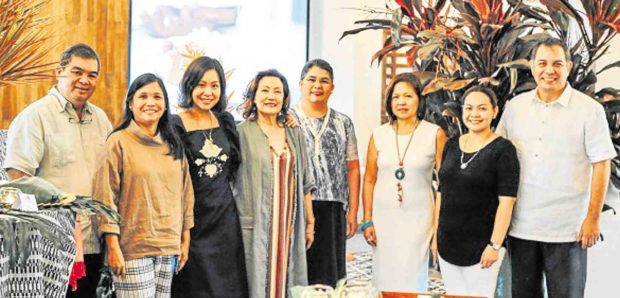
It seemed quite a distance to go to promote and launch the 33rd Negros Trade Fair at Antonio’s in Tagaytay. Not that anyone was complaining. After all, we knew we’d have more than a good lunch in a restaurant adjudged one of Asia’s best.
The lanai at Antonio’s The Cabana gave a taste of what to expect at the Negros Trade Fair—exceptionally creative products such as bags, clothes, furniture, decor, accessories.
The food has remained traditional, but has also kept up with today’s trends and packaging.
This year’s theme is “Sweet Talk: Sugar, Spice and Everything Nice.”
One of the earliest members of the Trade Fairs, Ina Gaston of Hacienda Crafts, pointed out the bags are white and brown, a reflection of white and brown sugar. But it should also remind us that the fall of the sugar industry more than 30 years ago gave birth to the Negros Trade Fair.
It was founded by women who were desperate to help the workers and themselves. They looked around their idle farms, saw the artistic and practical possibilities in the surplus materials scattered about, and made them into practical items like place mats and imaginative Christmas decor.
Nena Vargas Tantoco, who curated the display, said that the fair had its first showcase at Rustan’s. Among my favorites were the crucifixes made of coffee pods.
It seemed logical that the launch be held at Antonio’s because its chef and owner, Tonyboy Escalante, is from Negros. Here was another example of a creative Ilonggo. But we were not having Negros food that day.
The peculiar but familiar aroma led us to the raclette table, then to our table where the appetizers of salmon tartare and salted cod al pilpil were served on sliced bread.
There was generous serving of burrata for salad. It was difficult not to add the milky Italian cheese, but a glance at the menu reminded us that there were still more courses to follow.
We had an added treat, longganisa from Ereñeta-Manaloto Chorizo, a family business that has operated for generations.
A bit of crunchy pig’s ears, sliced thinly, then cooked as salpicao, was followed by a simple pasta with shavings of botarga, a cured Italian grey mullet roe which is all the flavor the dish needed.
The final course was a Portuguese stew of sea bass and mussels that reminded me of Macau trips and how I still had to visit Portugal.
The dessert waiting at the corner was ice cream of fruit flavors and of taho. Yes, it was like eating iced taho with syrup and sago. It was so good.
Seeing friends who’ve made the Negros Trade Fair what it is today brought me back to visits to document the food. The first trip was for a book and the place chosen to represent Negros was Hacienda Rosalia in Silay.
We went there another time for a magazine feature with Father Gaston cooking Adobong Milyonaryo, so-called because of the generous amount of garlic used. Brothers Jomi and Joey Gaston prepared merienda of rich ensaymada and chocolate espeso in their house next door.
I remember an early Negros Trade Fair at Shangri-La Plaza, smelling the freshly done piyaya being toasted. I noted how wonderfully warm and fresh-tasting the piyaya was. I wrote about it and was told that the next day, there was a long line in the piyaya booth.
I am sure that the food will again be varied and great at the 33rd Negros Trade Fair to be held Sept. 26-30, including the other products. The bag I still have has outlived the company that made it, I was told. But I still have the silver candelabra with the red candles that graces my Christmas table.
E-mail pinoyfood04@yahoo.com